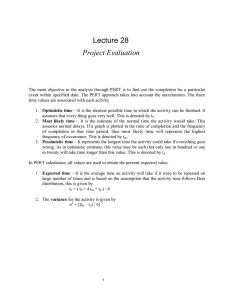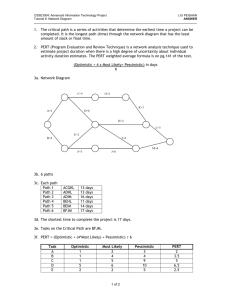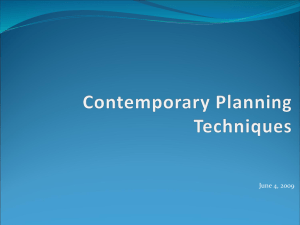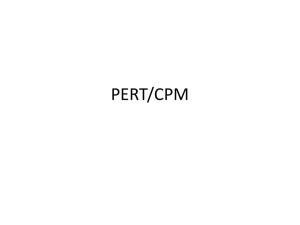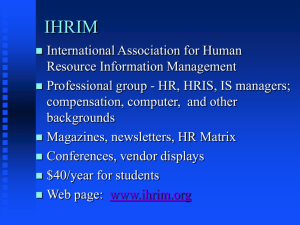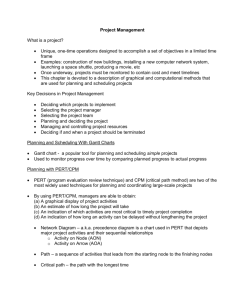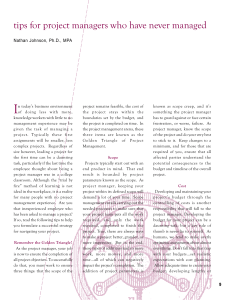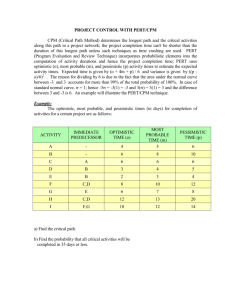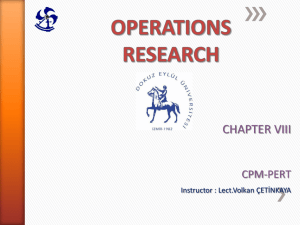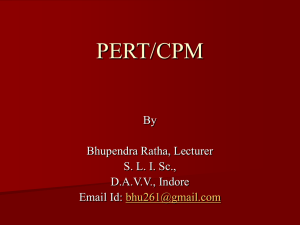Tutorial 5 – Software Project Risk Management
advertisement
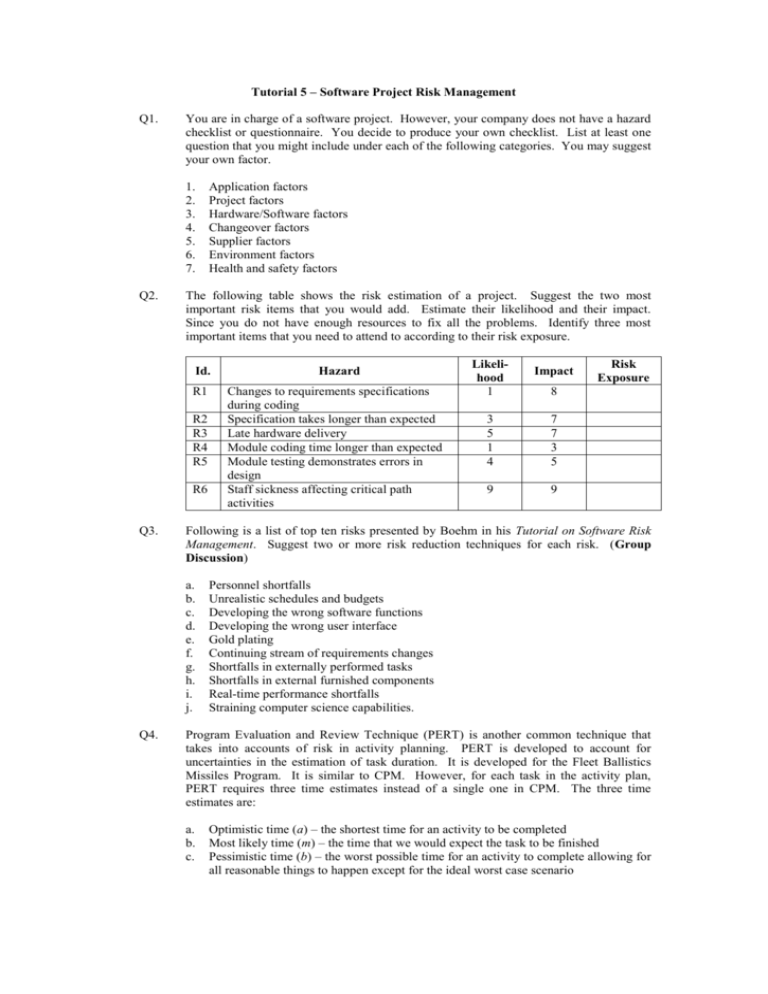
Tutorial 5 – Software Project Risk Management Q1. You are in charge of a software project. However, your company does not have a hazard checklist or questionnaire. You decide to produce your own checklist. List at least one question that you might include under each of the following categories. You may suggest your own factor. 1. 2. 3. 4. 5. 6. 7. Q2. Application factors Project factors Hardware/Software factors Changeover factors Supplier factors Environment factors Health and safety factors The following table shows the risk estimation of a project. Suggest the two most important risk items that you would add. Estimate their likelihood and their impact. Since you do not have enough resources to fix all the problems. Identify three most important items that you need to attend to according to their risk exposure. Id. R1 R2 R3 R4 R5 R6 Q3. Changes to requirements specifications during coding Specification takes longer than expected Late hardware delivery Module coding time longer than expected Module testing demonstrates errors in design Staff sickness affecting critical path activities Likelihood 1 Impact Risk Exposure 8 3 5 1 4 7 7 3 5 9 9 Following is a list of top ten risks presented by Boehm in his Tutorial on Software Risk Management. Suggest two or more risk reduction techniques for each risk. (Group Discussion) a. b. c. d. e. f. g. h. i. j. Q4. Hazard Personnel shortfalls Unrealistic schedules and budgets Developing the wrong software functions Developing the wrong user interface Gold plating Continuing stream of requirements changes Shortfalls in externally performed tasks Shortfalls in external furnished components Real-time performance shortfalls Straining computer science capabilities. Program Evaluation and Review Technique (PERT) is another common technique that takes into accounts of risk in activity planning. PERT is developed to account for uncertainties in the estimation of task duration. It is developed for the Fleet Ballistics Missiles Program. It is similar to CPM. However, for each task in the activity plan, PERT requires three time estimates instead of a single one in CPM. The three time estimates are: a. b. c. Optimistic time (a) – the shortest time for an activity to be completed Most likely time (m) – the time that we would expect the task to be finished Pessimistic time (b) – the worst possible time for an activity to complete allowing for all reasonable things to happen except for the ideal worst case scenario In order to combine the effects of these three estimates, the expected time (t) and the standard deviation (s) are calculated based on the following formula: t = (a + 4*m + b)/6 s = (b – a)/6 and Table 1 gives the PERT activity time estimates of a project and the corresponding PERT diagram is given in Figure 1. Complete the table using the given formula and the figure using the technique for CPM (forward pass and backward pass). [Hint: Use s s12 s22 sn2 to combine the effect of the standard deviations s1 , s 2 ,, s n of the previous activities. If there are two different paths to a node, use the one with the highest standard deviation.] Table 1 The PERT activity time estimates Task Name Id. A B C D E F G H Percedent Hardware selection Software design Hardware installation Coding and testing File take-on Documentation User training System installation and testing A B B E, F C, D Optimistic (a) 5 3 2 3.5 1 8 2 2 Duration Estimation Most Pessimistic Expected likely (m) (b) (t) 6 8 6.17 4 5 4.00 3 3 2.83 4 5 4.08 3 4 10 15 3 4 2 2.5 Standard dev. (s) 0.50 0.33 0.17 0.53 *Each node may have a target date. These targetPERT datesactivity are normally set by external conditions. For Figure 1 The diagram example, the project has to be finished in 15 weeks. The Activity C must be finished by week 11. The staffs involved in Activity F are reassigned to other projects at week 10. Once the PERT activity diagram is determined, you can estimate the probability for the node to be finished in time. See Target date C Section 7.8 of Hughes book for detailed calculations. t = 2.83 2 s = 0.17 A 6.17 0.50 t = 6.17 s = 0.50 B t = 4.00 s = 0.33 1 0 3 D t = 4.08 s = 0.25 0 F t= s= 4 11* 9 0.53 E t= s= G t= s= 5 10* H t = 2.08 s = 0.08 6 15*
